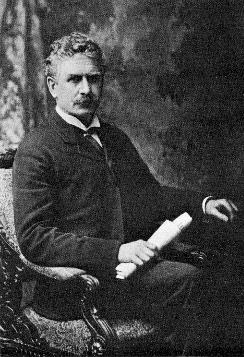The Revolutionary Priest

Miguel Hidalgo y Castilla was born on this day in 1753 in Corralejo, New Spain (Mexico).
An ethnic Spaniard, the son of a hacienda manager in Guanajuato, Hidalgo entered the Jesuit College of San Francisco Javier in Valladolid, but barely received two years of schooling when King Charles III of Spain banished the Jesuits from New Spain and confiscated all of their property. Switching to the diocesan College of San Nicolas Obispo in Valladolid, Hidalgo studied rhetoric, Latin and theology as well as Indian languages, and was finally ordained as a priest in 1778. He stayed to teach at the College, becoming its rector, but he earned a reputation for freethinking and unorthodoxy, and was brought before the Holy Office of the Inquisition in 1800 on charges that he read banned books and kept a mistress. The charges were never proven.
In 1803, Hidalgo left Valladolid to accept the small parish of Dolores, where he began to busy himself with improving economic conditions among his parishioners, introducing new industries (tile making, tanning, beekeeping) and debating local ethnic Spaniards about questions of social philosophy, largely influenced by the writings of Francisco Suarez. His debating activities grew into the formation of the Queretaro Literary Society, among whose members were Ignacio Allende, a 35 year-old cavalry captain; Juan de Aldama Gonzalez, another soldier; Miguel Dominguez, a former government official; and Miguel's wife Josefa Ortiz de Dominguez.
Together the Literary Club, bristling at Spanish rule under Joseph Bonaparte, hatched a plot for separating New Spain from Spanish rule, to be executed on December 8, 1810 with a stow of arms and ammunition they horded at the house of Epigmenio Gonzalez. The plot was leaked to the authorities in Mexico City, and on September 13 the arms were seized, and warrants were put out for the arrest of Hidalgo, Allende and Aldama. Hidalgo rang the church bells to bring his parishioners to mass early on September 16, and when they assembled at the church in Dolores, Hidalgo sermonized on revolution, urging them to join him in armed struggle against Spain.
With an enthusiastic but rag-tag band of poorly armed mestizos and Indians, Hidalgo traveled to San Miguel, picking up recruits along the way. At Atotonilco, Hidalgo seized the banner of the dark-skinned Virgin of Guadelupe and adopted it as the emblem of his crusade, and it became an important recruiting tool as he combed the countryside. Hidalgo's army seized a number of towns without much effort, but Hidalgo's inability to control his army meant that every battle was followed in victory by Hidalgo's Indians violently pillaging the houses of the local ethnic Spaniards.
Within a month they had captured Guanajuato, Zacatecas, San Luis Potosi and Valladolid, and planned a march on Mexico City. Outside of Mexico City, Hidalgo won a decisive victory over the smaller army of government soldiers at Monte de las Cruces, and Mexico City seemed to be ready for the taking. Hidalgo worried, however, that his uncontrollable army would destroy the City, and ordered a retreat over the objections of Allende. Many of his rebels, sensing that the opportunity had been lost, deserted; and while Hidalgo traveled North, the government regrouped and defeated Hidalgo's forces at Puente de Calderon.
Fleeing to Texas, Hidalgo and Allende were captured by the Spanish in March 1811. Allende was immediately executed, but Hidalgo was returned to the Inquisition, which found him guilty of treason and heresy, defrocked him and turned him over to the government for execution by firing squad on July 31, 1811. His corpse was decapitated and Hidalgo's head was stuck on a pole and displayed as a warning to the Indians.
Although Hidalgo's rebellion was unsuccessful in turning out the Spanish, he did manage to undo 300 years of stability and complacency among the Spanish in Mexico in 120 days. He failed due to bad military judgment, but he is nonetheless worshipped as the patron saint of the birth of the Mexican nation, something which was not to come until 11 years after his death. No one else played as much of a role in inspiring people with the credibility of Mexican independence. The day Hidalgo rang the church bells, September 16, is now celebrated as Independence Day in Mexico.
Labels: Mexico






